Features
Exploring fundamental research tech transfer at CERN
25 February 2019
We interview Bernard Denis of the CERN knowledge transfer team
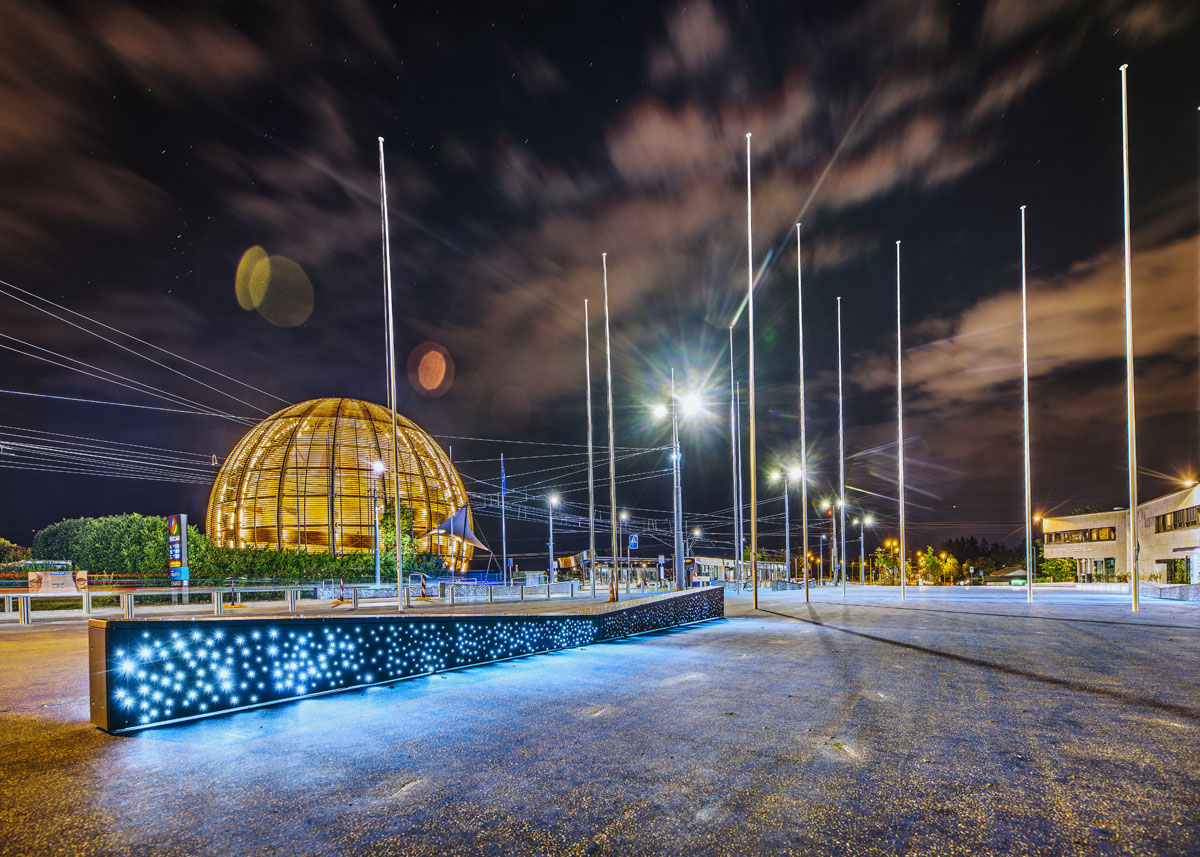
Bernard Denis joined the Technology Transfer Group of the European Organisation for Nuclear Research, known as CERN, in 2005 as section leader with responsibilities for all technology transfer operational activities and soon after, was appointed deputy group leader. In 2012, Bernard was seconded to the European Commission. He joined the Intellectual Property and Technology Transfer unit of DG Joint Research Centre (JRC) where he first provided expert advice for the IPR strategy of the Galileo Satellite Navigation programme. Later, he was appointed head of the technology transfer sector of the JRC.
Today, Bernard is back at CERN advising the knowledge transfer group. He is also a member of the Professional Development Committee of ASTP-Proton, a lecturer at Geneva University, and a regular expert for WIPO.
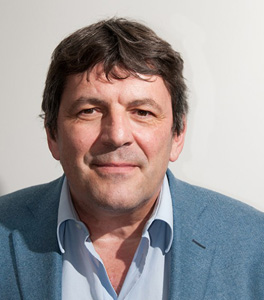
Bernard Denis, Technology Transfer Group, CERN.
What are the main activities of the knowledge transfer group at CERN?
We are engaged in classical technology transfer activities such as patenting, licensing, collaborative R&D and consulting across different domains. CERN’s goal is to study the basic constituents of matter. This is fundamental research, indeed, more fundamental than CERN is difficult to achieve. So, we tend to transfer the technology that we develop for the scientific instruments (particle accelerators, detectors and IT infrastructures) we build to execute our scientific programme, endeavouring to find applications for our technology in fields beyond those for which it was originally designed. We have a special focus on medical applications; technologies that can be used for cancer treatment and medical imaging, for example.
Our technology transfer work does not only target industry. Licensing, for example, is also used as a tool to share, for free, with other research institutes. We are a big supporter of open source software and open hardware.
We also work in the area of training to foster entrepreneurship, explain the relevance of intellectual property and offer start-up support, although we do not take equity. We partner with incubators and support the transfer of knowledge through initiatives related to open access to scientific publications.
Our portfolio comprises 24 patents, but while the process of patenting has been useful for us, patents are not a large part of our knowledge transfer activity. The scientific programme of CERN is performed by scientific collaborations involving research institutes from all over the world. In many of these collaborations we agree at the outset that all partners should be given a perpetual free license for the use of their technologies for the purpose of the experiment. For scientific collaborations aimed at developing a technology having clear industrial applications, the management of IP (ownership, protection, access for commercialisation) is precisely defined in the collaboration agreement.
What lessons have you have learnt from your technology transfer experience?
There is no one size fits all for technology transfer. CERN as a research infrastructure has a different business model than universities and national research centres. We do not have to rely on industry funding for our research as our scientific programme is covered by our own budget. Twenty-two member states contribute funding to CERN and this budget is intended to cover our full research programme. Industry collaboration is always subject to the availability of internal resource and the priority is always given to the execution of our scientific programme.
Also, at CERN, we innovate to build the scientific instruments – accelerators, detectors and IT infrastructure – and we try to see how the developed technologies can be used for applications other than High Energy Physics.
Are transfer models changing at CERN?
Looking more closely at our patents, a reason why patenting hasn’t yielded high returns for us relates to the matchmaking between our technology and the needs of industry. We are trying to understand more and better the needs of industry but we are not thinking so much of patents, we are looking more at our unique competency and exploring where we could contribute to industry challenges.
This is a relatively new effort for our group and it is an on-going process of gradually trying to understand the industry challenge, the fit with our competency and the terms of engagement. It is about identifying the intersection between our need to build accelerators and detectors and a requirement from industry. We try to pinpoint mutual benefit while fulfilling the needs of both.
When it comes to IP, our goal is not to make money but we do look to gain a fair share of the value of a given outcome in order to reinvest that share into future knowledge transfer activities.
In terms of innovation, what are the current hot area at CERN?
Our main strengths are in technologies related to the accelerator beam instrumentation, superconducting technology, cryogenics, ultra-high vacuum, radio frequency, sensors and microelectronics.
As an example of the current technological challenge, a group of institutes together with CERN is currently exploring the use of plasma to accelerate particles to high energy over a short distance. Another challenge for the future is in determining how to cope with the physical limit of Moore’s Law. We have relied on it to anticipate future computing power but there are physical limitations to Moore’s Law to be overcome.
For more details on the limits of Moore’s Law see ‘The end of computing’s steam age. Cloud technology offers a promising solution for the computing needs of particle physics. Elsen Eckhard, 19-8-2018. CERN.
Our work has different external uses. For example, superconducting magnet technology is used in MRI. We have an on-going consortium formed with academics and industry to identify common needs on superconducting magnets for MRI and for High Energy Physics applications. This is a good example of an innovation area where we have pinpointed common interest.
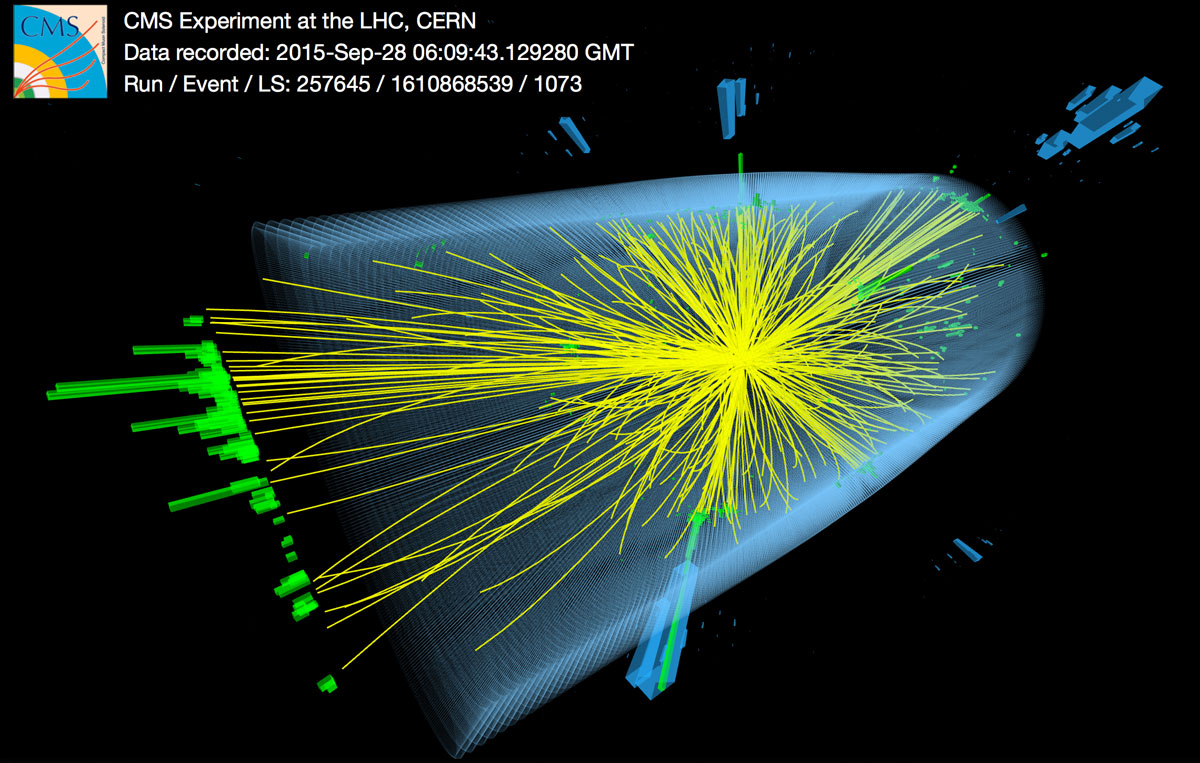 Picture: Particle collision at CERN
Picture: Particle collision at CERN
Do CERN inventors share common traits or common concerns?
CERN inventors are passionate people, passionate about the technology they have and are developing. They tend to be driven more by peer-recognition than by entrepreneurial results and so are less used to seeing the potential application of their work. One element of our activity within the knowledge transfer group is to provide incentives for people who come up with opportunities for knowledge transfer.
CERN is a collaborative environment where different institutes and organisations contribute to various degrees of development projects. The laboratory owns the intellectual property developed by our teams, unless specified otherwise in agreements signed by CERN and third parties. There is no direct financial reward to individuals for technology transfer. Our policy is to re-invest revenue gained into a related team’s work and also into a proof of concept fund. We try to foster entrepreneurial spirit, especially amongst our younger researchers, and we work with a network of partner incubators.
The patent process is useful in this respect because it forces us to assess whether our developed technologies are really innovative. Patent databases are increasingly consulted by CERN scientists as a result of the internal training developed on how to use such databases.
Does the patent system hinder or help invention and technology transfer in your view? What value does it bring generally?
For me the IP system is a tool to exploit or disseminate innovation but it doesn’t trigger innovation. Some fear that the system can stop people sharing research results in the High Energy Physics community. This concern is unfounded as mentioned in our IP policy, we always make sure that our technologies are freely made available for research purposes. There is some misunderstanding about the value and use of the patent system. The problem is not so much about what people don’t know about the patent system. It is more on what people believe they know. That is why training people on how to use and leverage intellectual property is important. You can use the IP system to prevent others from using the results of your research but also to make sure people share their results.
How could the patent system be improved?
Costs can be very high. The Unitary Patent will help in this respect.
See 4iP Council’s interview with European Patent Office Chief Economist, Yann Ménière for background on the nature and status of the Unitary Patent.
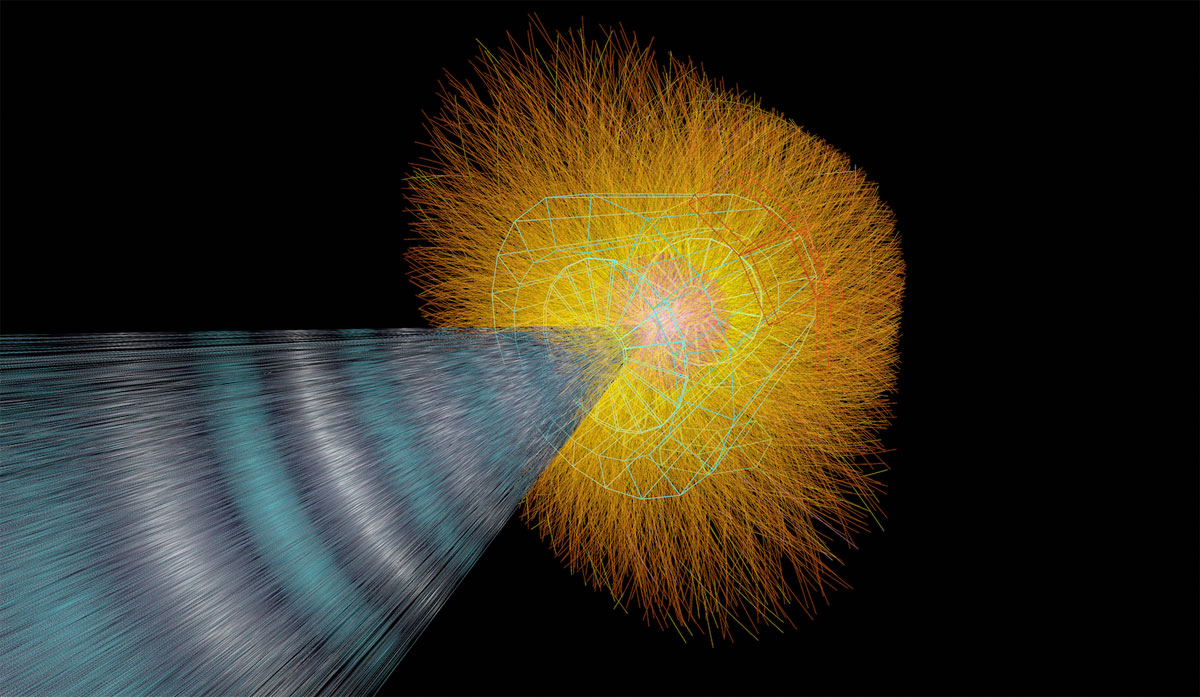 Picture: Particle collision at CERN
Picture: Particle collision at CERN
Do you feel that European policy makers understand how challenging invention is for both academics and business?
I sometimes have the feeling that policy makers use patents as a measure of innovation when they are in fact barely indicators. They don’t tell the whole story. There are many patents that will never translate into useful innovation. Also, policy makers often communicate using buzz words like “open innovation” without clearly explaining what they precisely mean allowing the different stakeholders to use these concept as it suits them. For research infrastructures like CERN, one of the challenges in terms of technology transfer is to identify the intersection between their technology needs and the one from industry. Policy makers could help by financing the development of technology roadmaps for various industrial sectors and make them more visible. Co-innovation between industry and public research centres will raise the need for suitable IP models to make sure that both parties benefit from the collaborations.
Is there sufficient understanding generally of technology transfer; how it works, why it matters?
The awareness of the role of technology transfer is increasing but that does not mean that all stakeholders are convinced of its need. This is where organisations like ASTP-Proton play a valuable role allowing technology transfer professional share their problems and experiences. I personally prefer the term knowledge transfer. It is really about deriving the maximum benefit from public research for society and that benefit is not always commercial.
See 4iP Council’s interview with ASTP-Proton’s Managing Director, Laura McDonald for background on the association’s work.
Do you have a message for academic researchers and business innovators who are thinking about cross-sector collaboration?
Try to understand the other side’s drivers and constraints and discuss them openly as soon as possible, and agree on the IP rules before starting to collaborate. I saw a very interesting initiative in this sense within the framework of H2020 where partners in the area of superconducting magnets identified a common project, and then held a workshop to talk about the pilot in terms of IP. Usually people focus on the R&D and then on the IP.
 Pictures: preparing particle collision and work on the ATLAS semiconductor at CERN.
Pictures: preparing particle collision and work on the ATLAS semiconductor at CERN.
About CERN
CERN was founded in 1952 with the mandate of establishing a world-class fundamental physics research organisation in Europe. At that time, pure physics research concentrated on understanding the inside of the atom, hence the word "nuclear".
Today, our understanding of matter goes much deeper than the nucleus, and CERN's main area of research is particle physics – the study of the fundamental constituents of matter and the forces acting between them. Because of this, the laboratory operated by CERN is often referred to as the European Laboratory for Particle Physics.
A few examples of what goes on at CERN
- CERN houses the 27-kilometre long Large Hadron Collider (see image below), the world's largest particle accelerator. It collides protons or lead ions at energies approaching the speed of light.
- The High-Luminosity Large Hadron Collider (LHC) project aims to crank up the performance of the LHC in order to increase the potential for discoveries after 2025. The objective is to increase luminosity by a factor of 10 beyond the LHC’s design value.
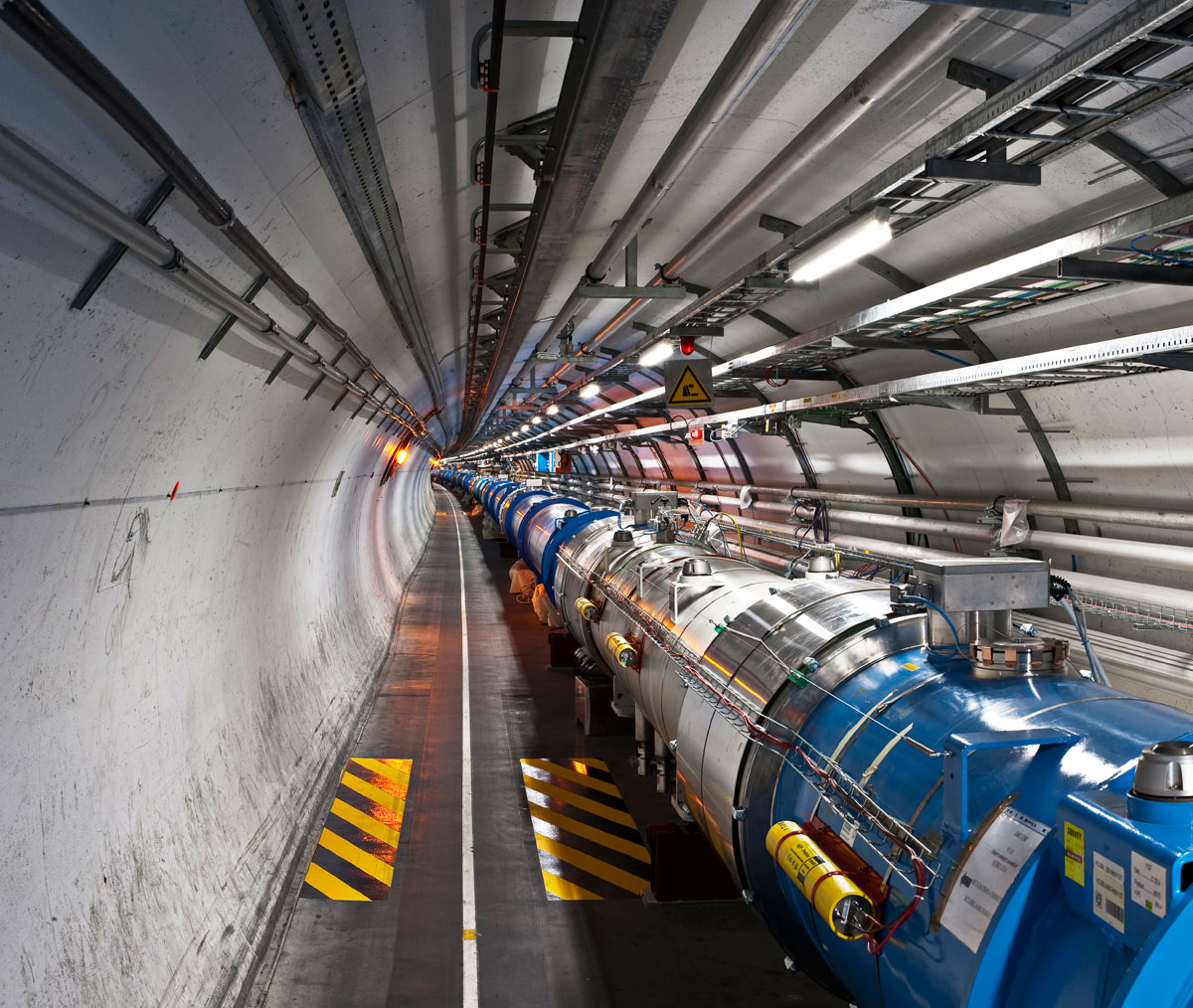
- The World Wide Web, invented at CERN in 1989 by British scientist Tim Berners-Lee, has grown to revolutionise communications worldwide
- The Big Bang should have created equal amounts of matter and antimatter. So why is there far more matter than antimatter in the universe? Physicists at CERN make antimatter to study in experiments. The starting point is the Antiproton Decelerator machine, which slows down antiprotons so that physicists can investigate their properties.
- Approximately 2500 people work at CERN and over 12,000 researchers across Europe and beyond engage in CERN projects.
Author: Emma Bluck
The views expressed in this feature are those of the interviewee and may not reflect the views of 4iP Council or its members. The purpose of this feature area is to reflect thinking on the topic of intellectual property and enable open discussion.



